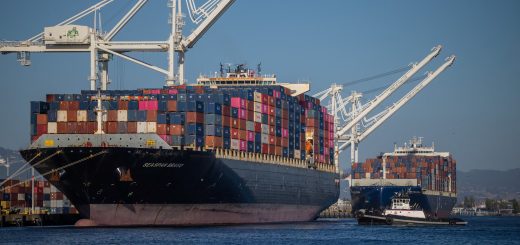Affordable China Package Consolidation for European Retailers: A Smart Shipping Solution
Introduction
European small businesses face numerous challenges when importing products from China, including high shipping costs, complex customs procedures, and the need for timely delivery. These challenges can strain resources and impact profitability. One effective solution to mitigate these issues is through consolidated shipping, specifically Less-than-Container Load (LCL) consolidation.
What Is LCL Consolidation?
LCL consolidation involves combining multiple small shipments from various suppliers into a single container. This approach allows businesses to share container space, reducing per-unit shipping costs and improving overall efficiency. It’s particularly beneficial for small businesses that do not have enough volume to fill a full container.
Benefits of LCL Consolidation for European Small Retailers
1. Cost Savings
By consolidating shipments, businesses can significantly reduce shipping costs. Sharing container space with other shippers allows for more economical shipping rates. For instance, companies like CNXtrans offer free consolidation services, allowing businesses to consolidate all items at a central location, repack them efficiently, and ship them together to any global destination, saving time and money. Fulfillment-Box
2. Simplified Customs Clearance
Handling a single consolidated shipment simplifies the customs clearance process. All necessary documentation from multiple suppliers is submitted together, reducing the risk of delays and potential penalties. This efficiency is crucial for meeting the stringent import regulations in both the EU and individual European countries.
3. Improved Inventory Management
Receiving consolidated shipments enables businesses to better manage their inventory. With fewer shipments to track, companies can optimize warehouse space and reduce the likelihood of stockouts or overstock situations.
4. Environmental Sustainability
By reducing the number of shipments, consolidation contributes to fewer carbon emissions, aligning with global sustainability goals. This approach supports businesses in demonstrating their commitment to environmental responsibility.
How to Implement LCL Consolidation for Your Business
1. Choose a Reliable Freight Forwarder
Selecting a reputable freight forwarder is crucial for the success of LCL consolidation. Providers like CNXtrans and Mainfreight offer comprehensive LCL consolidation services, including warehousing, repackaging, and door-to-door delivery.
2. Coordinate with Suppliers
Work closely with your Chinese suppliers to ensure timely delivery of goods to the consolidation warehouse. Clear communication and coordination are essential to prevent delays and ensure that all items are ready for consolidation.
3. Understand Customs Regulations
Familiarize yourself with the customs regulations of the destination country. Ensure that all products meet the necessary standards and certifications required for importation. This knowledge will help in preparing the correct documentation and avoiding potential issues at customs.
4. Monitor Shipments
Utilize tracking systems provided by your freight forwarder to monitor the status of your consolidated shipments. Real-time updates can help you stay informed and address any issues promptly.
Estimated Shipping Costs
The cost of shipping from China to Europe varies based on transportation mode, season, cargo size, urgency, and destination. Estimated rates for consolidated cargo (LCL) are as follows:
- Sea freight: $50–$100 per cubic meter
- Rail freight: $3–$5 per kilogram
- Air freight: $4–$8 per kilogram
- Express delivery: $8–$10 per kilogram
The delivery time from China to Europe depends on the mode of transportation and distance:
- Sea freight: usually 30–50 days
- Rail freight: 15–30 days
- Air freight: 3–5 days
- Express delivery: 1–3 days Freightos
The most cost-effective way to ship cargo from China to Europe is by sea, though it may take around two months for delivery.
Choosing the Right Shipping Method
When selecting a shipping method, consider the following factors:
- Cost: Sea freight is the most economical option for large shipments, while air freight is faster but more expensive.
- Urgency: Air freight is suitable for time-sensitive shipments, whereas sea freight is better for non-urgent deliveries.
- Cargo Type: Perishable or high-value items may require faster shipping methods.
Conclusion
LCL consolidation offers a strategic solution for European small retailers looking to reduce shipping costs, simplify logistics, and improve overall efficiency when importing from China. By partnering with reliable freight forwarders and coordinating effectively with suppliers, businesses can navigate the complexities of international shipping and enhance their competitiveness in the market.

